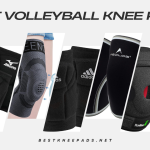Playing sports is an excellent way to keep yourself physically fit and mentally healthy. However, it’s essential to ensure that you’re playing sports safely to avoid any injuries or accidents. In this section, we’ll provide you with tips and strategies to prevent sports-related injuries, so you can enjoy your favorite sports without fear.
Key Takeaways
- Playing sports safely is crucial for injury prevention.
- Proper warm-up, stretching, and using the right equipment are essential for safety.
- Playing with correct technique and form can help reduce the risk of injuries.
- Listening to your body and recognizing your limitations is essential for preventing overexertion and potential injuries.
- Each sport has specific safety considerations that you need to keep in mind.
Understanding the Risks
Playing sports can be a thrilling and fun way to stay active, but it’s important to remember that there are potential risks involved. Sports injuries can range from minor sprains and strains to more severe conditions that require medical attention. By understanding the possible risks associated with playing sports, athletes can take steps to prevent injuries from occurring.
Common Sports Injuries
Some of the most common sports injuries include:
- Sprains and strains
- Fractures
- Dislocations
- Torn ligaments or tendons
- Concussions
- Overuse injuries such as tennis elbow or runner’s knee
It’s important to note that different sports may have a higher risk of certain injuries. For example, contact sports like football or hockey have a higher risk of concussions, while sports that require repetitive motions like tennis or golf may lead to overuse injuries.
Regardless of the sport, it’s essential to take proper precautions to reduce the likelihood of injury. In the following sections of this guide, we’ll explore tips and strategies for playing sports safely and avoiding injuries.
Proper Warm-Up and Stretching
Warming up and stretching are essential steps to prepare your body for physical activity. A proper warm-up routine can increase your heart rate and circulation, improving blood flow to your muscles and joints. This helps prevent injuries by loosening up your muscles and reducing the strain placed on them during activity.
Begin your warm-up with light aerobic exercises like brisk walking or jogging for five to ten minutes. This increases your body’s core temperature and prepares your muscles for stretching.
Next, move on to dynamic stretching exercises that gradually increase your range of motion. These exercises involve movement, unlike static stretching, which involves holding a position. Dynamic stretching helps to activate different muscle groups and improve flexibility.
Examples of dynamic stretching exercises include high knees, walking lunges, and leg swings. Be sure to focus on the muscle groups that will be used during your activity. For instance, if you’re playing basketball, emphasize leg and arm muscles.
After your workout, cool down with a few minutes of static stretching. Static stretching involves holding a position for 20 to 30 seconds, allowing your muscles to relax and recover. This can include exercises like quad stretches, hamstring stretches, and shoulder stretches.
By incorporating both dynamic and static stretching exercises into your routine, you can help prevent injuries and improve your overall performance.
Using the Right Equipment
One of the most crucial aspects of playing sports safely is using the proper equipment. Not only does it enhance performance, but it also serves as a protective measure against injuries. Different sports require different equipment, so it’s essential to invest in the right gear that suits your needs.
For example, when playing football, you need a helmet, mouthguard, shoulder pads, and cleats to ensure safety on the field. Similarly, for hockey, you would need a helmet with a cage, gloves, shin guards, elbow pads, and a mouthguard to protect yourself from potential harm.
It’s also vital to ensure that your equipment fits correctly. Ill-fitting gear can compromise your safety and prevent you from playing at your best. Before purchasing, make sure to consult the size charts provided by the manufacturer and try on different sizes.
When participating in sports that require protective gear, it’s essential not to skip or skimp on any piece of equipment. Each item serves a purpose and is crucial for protecting your body. Investing in high-quality gear may come with a higher price tag, but it’s worth it in the long run for your safety and performance.
Overall, using the right sports equipment and protective gear is essential for playing sports safely and minimizing the risk of injuries.
Technique and Form
Correct technique and form are vital for playing sports safely and preventing injuries. By maintaining proper alignment and movement patterns, you can minimize stress on your joints and muscles, reducing the risk of strains, sprains, and other common sports injuries.
Here are some tips to help you improve your technique and form:
- Focus on maintaining good posture at all times. Keep your shoulders back and down, chest open, and head aligned with your spine.
- When running or jumping, land on the balls of your feet rather than your heels. This can help absorb shock and reduce stress on your joints.
- When lifting weights or performing strength exercises, engage your core muscles to support your spine and keep it stable.
- Practice smooth and controlled movements. Avoid jerky or sudden motions that can put you at risk for injury.
It’s important to note that technique and form may vary depending on the sport you’re playing. Consult with a coach or trainer to learn the specific movements and techniques required for your sport.
Listening to Your Body
While warming up, pay attention to your body signals and recognize your limitations. Do not push yourself beyond your limits or ignore pain or discomfort, as this can lead to injuries.
During the activity, take breaks as needed and drink plenty of fluids to prevent dehydration. If you start feeling fatigued or experience any pain, stop and rest immediately.
After the activity, take time to cool down and stretch your muscles to prevent stiffness and soreness. If you notice any swelling or pain, use ice and compression to reduce inflammation and see a doctor if necessary.
Remember, your body is unique, and it responds differently to physical activity. Therefore, it’s crucial to tune into your body’s signals and adjust accordingly to prevent overexertion and potential injuries.
Sports-Specific Safety Tips
Each sport comes with its unique safety considerations. By following specific injury prevention strategies, you can enjoy your favorite sport without worrying about getting hurt. Here are some sports-specific safety tips:
Basketball
Many basketball-related injuries occur due to the high-impact nature of the sport, such as sprains, strains, and fractures. Here are some tips for preventing injuries while playing basketball:
- Wear supportive and properly fitted basketball shoes
- Warm-up before playing with a light jog, jumping jacks, and stretching
- Practice correct landing techniques to minimize the risk of knee injuries
- Stay hydrated and take breaks when feeling fatigued
Soccer
Soccer players are prone to a wide range of injuries due to the constant running, jumping, and quick directional changes. Here are some tips for preventing soccer-related injuries:
- Wear shin guards at all times during play
- Stretch the muscles before a game, focusing on the quadriceps, hamstrings, and calves
- Stay hydrated throughout the game
- Use the correct form when kicking the ball and running to avoid muscle strains and tears
Tennis
Tennis players are susceptible to a range of upper body injuries, including tennis elbow, shoulder strains, and wrist injuries. Here are some tips for preventing injuries while playing tennis:
- Warm-up before playing by jogging, stretching, and doing shoulder and wrist exercises
- Use the correct grip size for your tennis racket to avoid wrist and elbow injuries
- Take breaks during long matches to rest and recover
- Practice proper form when serving and hitting to prevent shoulder and elbow strains
Swimming
Swimming may seem like a low-impact sport, but it still poses unique safety concerns, such as drowning and muscle strains. Here are some tips for preventing injuries while swimming:
- Warm-up before swimming with a few laps of light activity
- Stay hydrated before and after swimming to avoid cramps
- Use proper form when swimming to prevent shoulder and back injuries
- Swim with a buddy or lifeguard nearby for added safety
Volleyball
Playing volleyball involves a lot of jumping and quick movements that can cause injuries if not done correctly. Here are some tips for preventing volleyball-related injuries:
- Wear proper volleyball shoes with ankle support to prevent ankle sprains
- Warm-up before playing with a light jog, jumping jacks, and stretching
- Practice correct landing techniques to minimize the risk of knee injuries
- Stay hydrated and take breaks when feeling fatigued
By following these sports-specific safety tips and implementing injury prevention strategies, you can stay safe while enjoying your favorite sport.
Conclusion
Playing sports is a great way to stay active and have fun. However, it’s important to prioritize safety to avoid potential injuries. By following the tips and strategies outlined in this guide, you can play sports safely and confidently without worry.
Remember to Listen to Your Body
It’s crucial to pay attention to your body’s signals and recognize your limits when playing sports. Resting, staying hydrated, and recognizing signs of fatigue or pain can prevent overexertion and potential injuries.
Choose the Right Equipment
Having the right sports equipment and protective gear is essential to staying safe while playing. Make sure to choose the appropriate equipment for your sport and use it properly to minimize the risk of injuries.
Follow Proper Techniques and Form
Playing sports with proper technique and form can significantly reduce the risk of injuries. Maintaining correct posture, body alignment, and movement patterns can minimize the chance of getting hurt.
Sport-Specific Safety Tips
Each sport comes with unique safety considerations. Be sure to follow sport-specific safety tips and strategies to prevent injuries while playing.
Remember, safety always comes first when it comes to playing sports. So, have fun and play safely!










